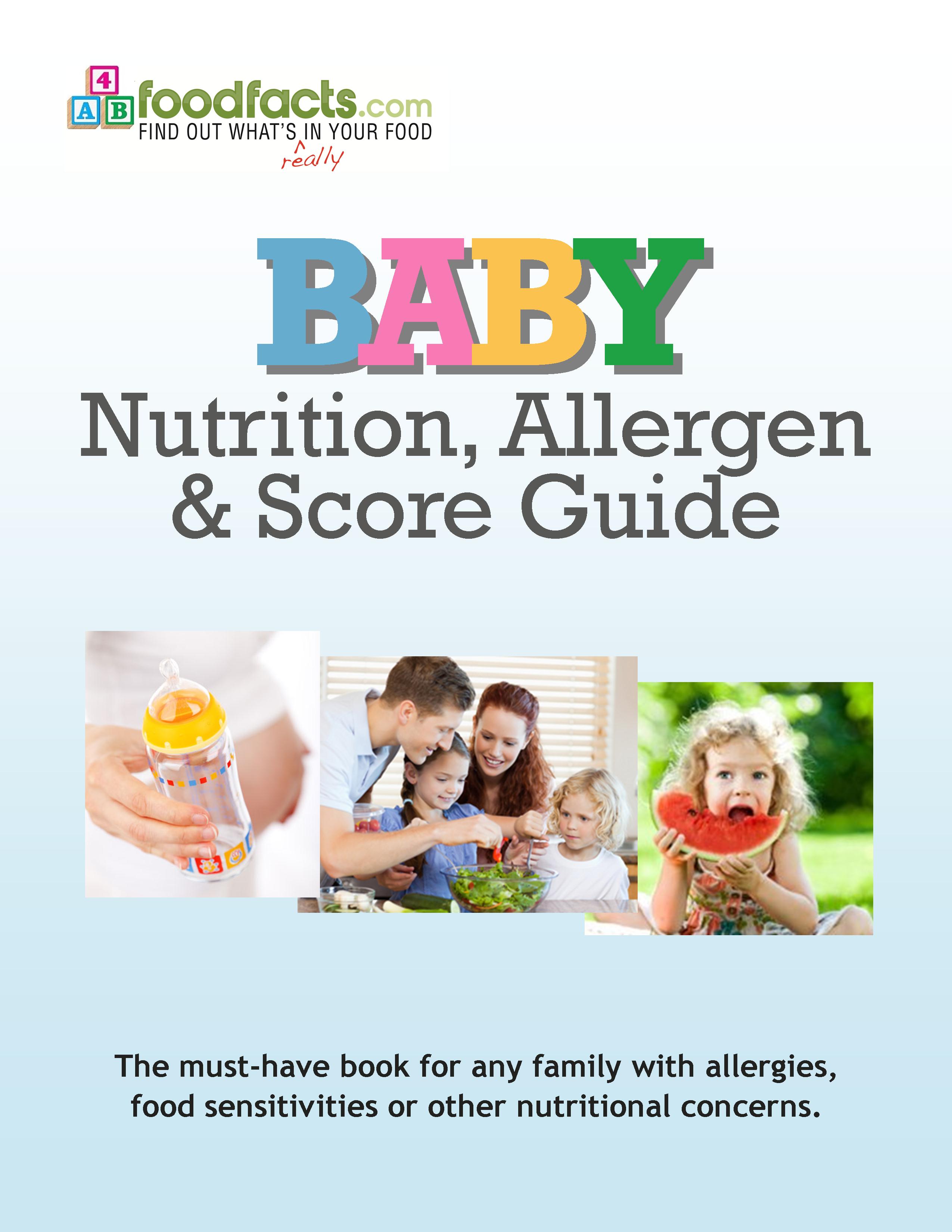There’s been some great dialogue taking place here on the blog and on my Facebook pages about how food allergies are affecting our lives, and the lives of our children,as part of Food Allergy Awareness Week. And today, I wanted to share with you a book that was recently brought to my attention, when a colleague read my recent post about my sesame allergy. The book is called Baby Nutrition, Allergen & Score Guide and it’s brought to you by Stanley Rak of FoodFacts.com, a comprehensive online resource that has cultivated a huge following (um, it has over 45,000 Twitter followers!) amongst consumers, nutritionists, pediatricians, health professionals and others who want to find out what’s really in our food.
Ever notice how eating cheesy processed snacks like Cheetos or Doritos leave your fingers and mouth a different color and create intense cravings for bag after bag of the salty, addictive crunchy contents? That’s exactly the experience that gave Rak, a New Jersey businessman, the impetus to look at the ingredient list on the bag and scratch his head over several unpronounceable names. Rak noticed his grandson’s demeanor, temperament and behavior change within 10 minutes of consuming the snack – and not for the better. Taking the ingredient list to task, Rak began what would become an all-consuming obsession with identifying what exactly is in our food. Within a matter of months he founded www.Foodfacts.com.
 Foodfacts’ BABY Nutrition, Allergen and Score Guide makes it easy to wisely choose from a range of baby-toddler products in multiple categories, while offering sage advice on controversial ingredients, understanding nutrients and how to incorporate the most nutritious foods into the adult, pregnant mom and baby diet. From switching to semi-solids for babies to common sense advice for moms, this non-preachy how-to book is a must-have tool for people with a thirst for understanding what’s really in their food. Within three weeks of eliminating unhealthy foods from a child or adult diet, multiple health benefits are evident. The reason? Addictions are believed to subside in this time frame, cleansing the body of chemicals which trigger mood, behavior, cravings and other downsides of unhealthy eating.
Foodfacts’ BABY Nutrition, Allergen and Score Guide makes it easy to wisely choose from a range of baby-toddler products in multiple categories, while offering sage advice on controversial ingredients, understanding nutrients and how to incorporate the most nutritious foods into the adult, pregnant mom and baby diet. From switching to semi-solids for babies to common sense advice for moms, this non-preachy how-to book is a must-have tool for people with a thirst for understanding what’s really in their food. Within three weeks of eliminating unhealthy foods from a child or adult diet, multiple health benefits are evident. The reason? Addictions are believed to subside in this time frame, cleansing the body of chemicals which trigger mood, behavior, cravings and other downsides of unhealthy eating.
“The United States is far behind countries in Europe and other parts of the world in terms of transparency in the food industry and providing a full accounting of ingredients on labels,” Rak said. “What’s more, the U.S. doesn’t have rules about the use of chemicals that are known to be highly dangerous at worse and extremely addicting at best. Our excessive use of food dyes, allergens, artificial flavors and sugars, whether in the guise of high fructose corn syrup or other forms, has created a nation of kids that are inclined towards obesity, hyperactivity, sugar addiction and unhealthy adult years. When we use sugar-laden formulas in infancy and artificially flavored baby foods in later months, we are setting the stage for a host of behavioral and health problems that will impact them and their families socially, academically and financially.”
Rak’s short list of problem ingredients includes:
1. Artificial Dyes – These harmful chemicals have been shown to cause hyperactivity in children. In fact, products made with these dyes in the UK are required to carry warning labels!
2. Natural Flavors – This common ingredient is actually a label meant to hide long lists of “natural” chemicals that add flavor – and sometimes hidden allergens or controversial ingredients.
3. Sugars and “carbohydrates” – whether termed evaporated cane sugar, corn syrup or simply listed as “carbohydrates,” sugars have an immediate addicting quality that create the desire for more consumption.
4. Hydrogenated Oils – these oils contain trans fat, even if the manufacturer has manipulated a product’s serving size to appear trans fat free!
5. Hidden sources of MSG – names like “yeast extract,” “hydrolyzed protein” and “natural flavors” are all ways (but not the only ways!) that manufacturers slip MSG into their products, enhancing the taste but giving some consumers side effects such as headaches.
Foodfacts Baby Nutrition, Allergen & Score Guide is available through www.foodfacts.com. But one lucky mom a la mode reader will receive a copy! Enter today (hurry – giveaway ends 5/22/13!): a Rafflecopter giveaway
oxox
-mom a la mode
{I was not monetarily compensated for this post. I received a copy of the book for review purposes only. All opinions expressed here are solely mine. As always, check with a health care practitioner for advice on your personal health concerns.}
That’s wonderful! It’s even easier to eat cleanly in the summer because of all the amazing produce that is readily accessible and reasonably priced. Keep up the clean eating and let us know any tips or recipes you’ve incorporated into your new way of living/eating.
I have a new interest in this as I recently started eating very clean foods (no proceeded, no sugar, no breads, etc) in the hopes to clean out my system. Going to try for 1 month, already 2 weeks in, and feeling great, skin is great, mind is more Sharon, etc. Next step is kids. I was never that worried but there are some things our kids eat that may not be good for them. Great post and great resource!